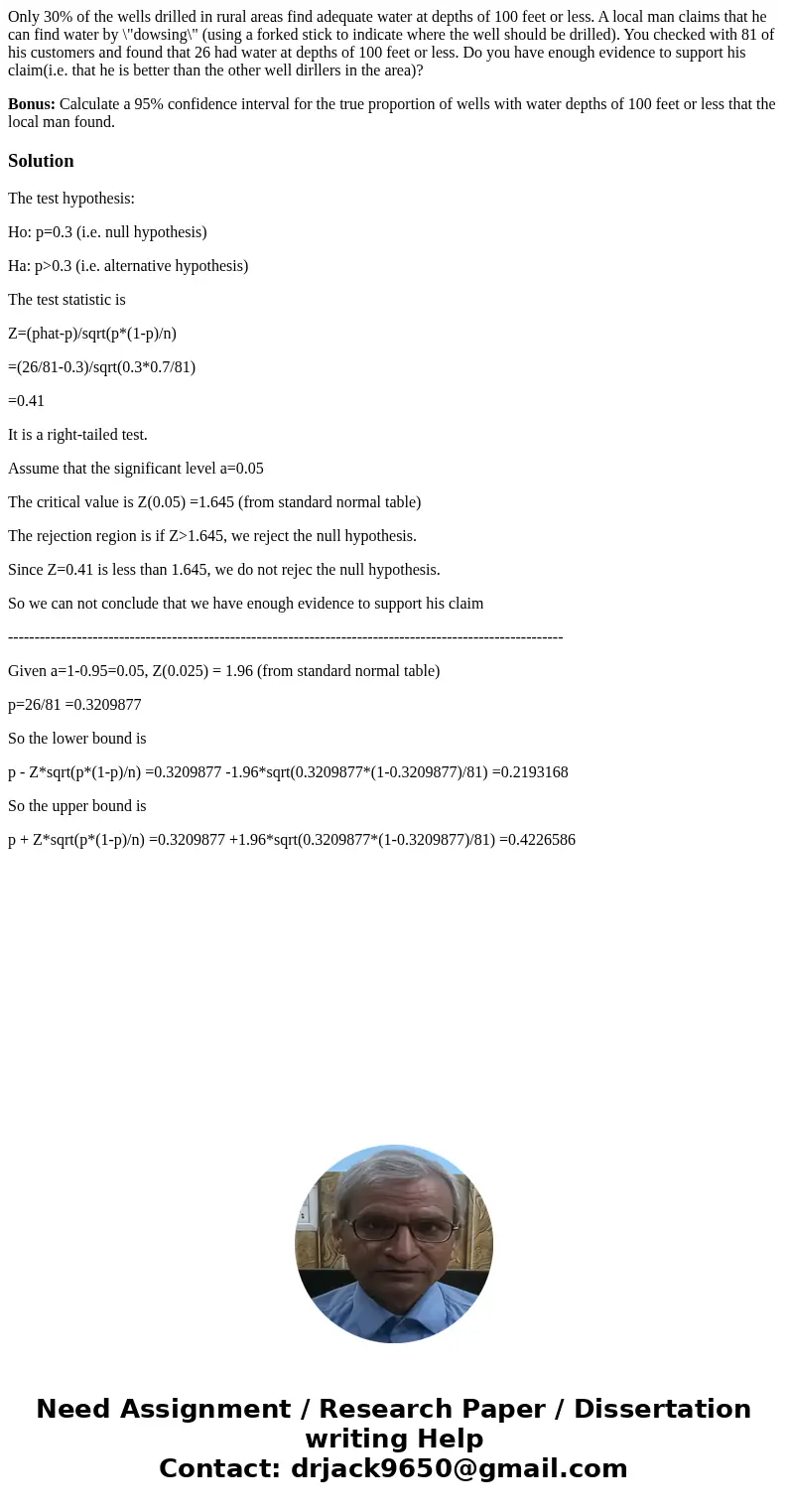Only 30 of the wells drilled in rural areas find adequate wa
Only 30% of the wells drilled in rural areas find adequate water at depths of 100 feet or less. A local man claims that he can find water by \"dowsing\" (using a forked stick to indicate where the well should be drilled). You checked with 81 of his customers and found that 26 had water at depths of 100 feet or less. Do you have enough evidence to support his claim(i.e. that he is better than the other well dirllers in the area)?
Bonus: Calculate a 95% confidence interval for the true proportion of wells with water depths of 100 feet or less that the local man found.
Solution
The test hypothesis:
Ho: p=0.3 (i.e. null hypothesis)
Ha: p>0.3 (i.e. alternative hypothesis)
The test statistic is
Z=(phat-p)/sqrt(p*(1-p)/n)
=(26/81-0.3)/sqrt(0.3*0.7/81)
=0.41
It is a right-tailed test.
Assume that the significant level a=0.05
The critical value is Z(0.05) =1.645 (from standard normal table)
The rejection region is if Z>1.645, we reject the null hypothesis.
Since Z=0.41 is less than 1.645, we do not rejec the null hypothesis.
So we can not conclude that we have enough evidence to support his claim
---------------------------------------------------------------------------------------------------------
Given a=1-0.95=0.05, Z(0.025) = 1.96 (from standard normal table)
p=26/81 =0.3209877
So the lower bound is
p - Z*sqrt(p*(1-p)/n) =0.3209877 -1.96*sqrt(0.3209877*(1-0.3209877)/81) =0.2193168
So the upper bound is
p + Z*sqrt(p*(1-p)/n) =0.3209877 +1.96*sqrt(0.3209877*(1-0.3209877)/81) =0.4226586

 Homework Sourse
Homework Sourse